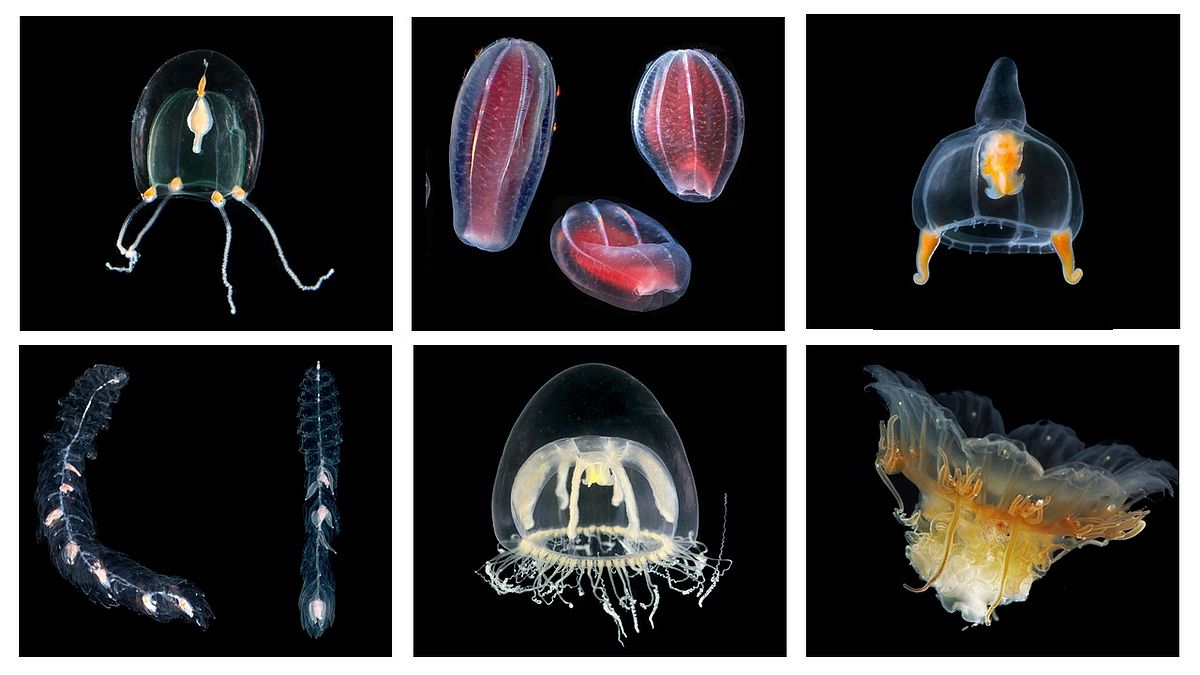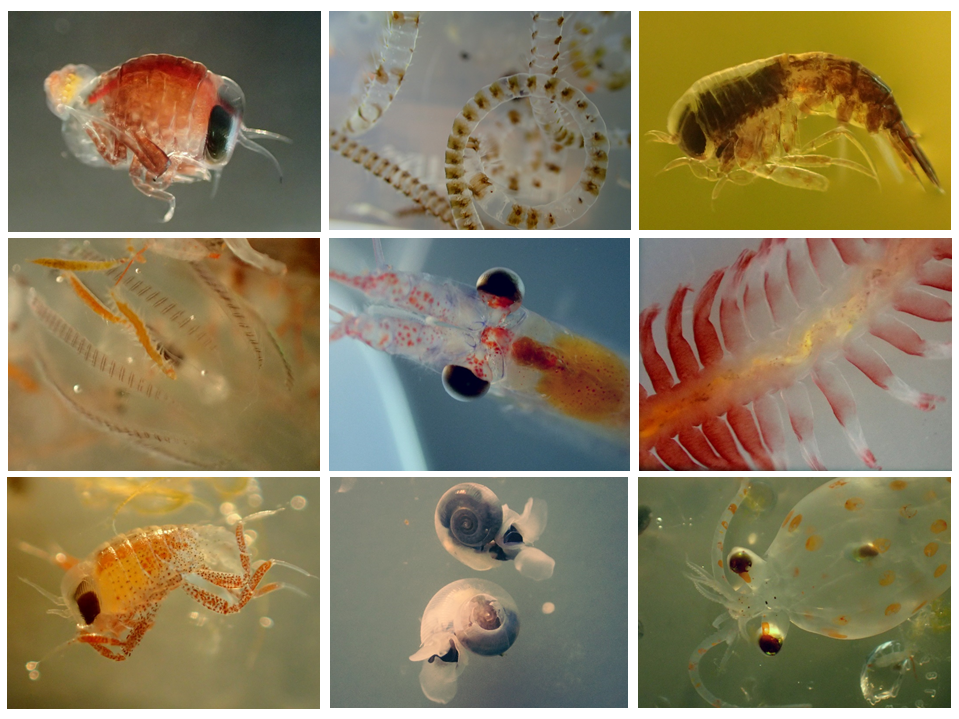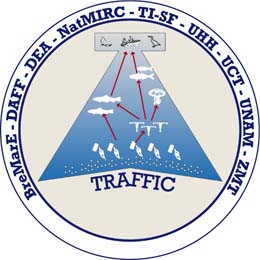Research
Research focus
Zooplankton in an Ocean of Change
Zooplankton plays a pivotal role in the control of ocean productionand determine the efficiency of the biological carbon pump, which contributes to regulating atmospheric CO2 levels. Therefore, zooplankton is shaping the pace and extent of climate change. They represent the principal pathway for energy from phytoplankton to higher trophic levels, such as fish and marine mammals, but also sustain microbial communities, for example through excretion and by contributing to the formation of “marine snow”.
Zooplankton organisms are drifting with ocean currents and are tightly bound to the water masses they inhabit and their physiology is finely tuned to the thermal gradients they experience. With their distribution and community patterns primarily driven by temperature and dissolved oxygen concentration, zooplankton species are major sentinels of climate change. Ongoing global warming causes changes in plankton distributions, and these range shifts are among the widest and fastest of all marine groups. Many species were shown to expand their ranges poleward as temperatures increase. Shifts in zooplankton community composition from one dominant group to another, will have cascading impacts on the energy flow and transfer efficiency from plankton to fish and other top consumers, ultimately threatening ecosystem services, such as fisheries.
Studying Zooplankton Responses and Resilience to Change
As the primary responses to contemporary climate change, organisms, or species, can react as “move, adapt, acclimate or die”, a well-known principle in biogeography. Evidence for poleward range shifts have been found for various boreal/temperate species, from phytoplankton to fish. However, for polar cold-adapted, species, migration options may be much more restricted. Having evolved within narrow and stable temperature ranges, these species are also expected to be particularly sensitive to thermal changes. A major re-structuring of pelagic ecosystems is expected. To better predict its impact and provide advice to policy-makers, it is crucial to identify the “winners” and “losers” in the pelagic communities. To study the different responses of temperate and polar species to anthropogenic pressure, including global warming, the Marine Zoology group aims to apply a holistic research programme investigating zooplankton diversity and current and future distribution patterns. We want to better understand their resilience to change, in the shape of acclimation and adaptation.
Current Research Projects

Gelatinous zooplankton are major drivers of ecosystem changes. This group includes jellyfish (i.e., cnidarian medusae and ctenophores), siphonophores, and pelagic tunicates (i.e., salps and appendicularians). Increases in biomass or “jellification” have been observed in several marine ecosystems, causing, amongst other factors, major fishery collapses. In the Southern Ocean, pelagic surveys demonstrate a shift from a krill- to a salp-based ecosystem over recent decades. This gelatinous shifts has major consequences on the food web, krill-dependent top predators, and biogeochemical cycles. For the Arctic region, accurate diversity and abundance data on jellies are virtually non-existent, impeding our ability to detect impacts of a similar magnitude. We study current and future species distributions of polar gelatinous zooplankton under climate-change scenarios. We combine net catches with optical video systems to provide new information on the drivers of jellyfish distributions in polar environments, including depth-related niche partitioning of congeneric species. On these datasets, we apply species distribution models to understand species and community patterns and predict changes under climate-change scenarios. We also reveal the importance of different jellyfish species as prey based on molecular diet studies of predator species such as fish and zooplankton predators. Finally, by investigating the species richness, abundances and trophic role of jellyfish in fjords in which the influence of Atlantic water differs, we set a baseline to detect potential range shifts and predict the impact of jellyfish on local food webs in an Atlantified Arctic.
Coastal upwelling systems such as the Humboldt upwelling system (HUS) are of great economic importance. The CUSCO project analyses the high productivity of the HUS off Peru. Despite similar primary production rates, fish landings of the HUS are five to ten times higher than compared to other upwelling systems. Therefore, the trophic transfer efficiency (TTE) between the systems must be different. The University of Bremen focuses on the structure of the pelagic food web, trophic interactions and the role of meso- and macrozooplankton in the HUS. Zooplankton plays a key role in marine food webs and ecosystems processes, as it links primary production to higher trophic levels including commercially harvested fish such as the Peruvian anchovy. Dietary preferences and the trophic position of key zooplankton species are identified based on data from a ship-based research expedition and a mesocosm field study off the coast of Peru. The hypotheses that short food chains and thus high TTE supports the high fish production of the HUS isbeing tested.
The overall aim of TRAFFIC is to understand the processes driving trophic transfer efficiencies in the northern and southern Benguela Upwelling Systems (nBUS, sBUS) and associated feedbacks to fisheries and climate. Coastal upwelling systems account for about 20% of annual marine fish landings and thus play a significant role not only in the food supply of the world's population but also in the carbon and nutrient turnover in the ocean. However, high phytoplankton productivity in the BUS stands in surprising contrast to the low productivity of the higher trophic levels such as fish, seabirds and seals.
The ecosystem structure in the nBUS and the sBUS has changed severely during the last decades: Despite similar primary production, significant differences of composition and biomass of fish stocks exist between these two subsystems. We aim to understand the reasons for the decrease in fishing yields in the nBUS and the causes of the major changes in the sBUS, in order to incorporate these into future sustainable management.


